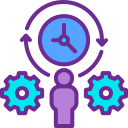Optimizing Tools, Workflows, and Notifications
Connect chat, issue trackers, docs, and calendars so status changes and comments flow automatically. Fewer copy‑paste moments mean fewer errors and faster handoffs. Start small: one integration that removes a daily annoyance pays immediate dividends.
Optimizing Tools, Workflows, and Notifications
Create priority channels, mute the rest, and schedule notification digests. Encourage colleagues to use clear subject lines and urgency labels. Protecting focus time is the fastest way to improve quality and morale in distributed teams.
Optimizing Tools, Workflows, and Notifications
Track cycle time, decision latency, and engagement with artifacts rather than counting meetings. These indicators reveal friction without rewarding performative busyness. Publish a simple dashboard and invite the team to propose one improvement monthly.
Optimizing Tools, Workflows, and Notifications
Lorem ipsum dolor sit amet, consectetur adipiscing elit. Ut elit tellus, luctus nec ullamcorper mattis, pulvinar dapibus leo.




